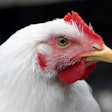
In Africa, the only states to have registered new cases of highly pathogenic avian influenza (HPAI) in poultry over the past few weeks have been South Africa and Togo. Meanwhile, the Philippines has confirmed several outbreaks in commercial birds that occurred earlier this year.
At the end of June, the H5N1 HPAI virus was detected at a poultry farm in the Togolese Republic (Togo).
Affected was a flock of 1,500 laying hens, according to the official notification to the World Organisation for Animal Health (WOAH). Around 1,450 of the birds died at the premises in Golfe, a prefecture in the southernmost region of Maritime.
From the official report, the outbreak appears to be near to the West African state’s capital, Lomé.
According to the WOAH notification, this is the first outbreak in the area linked to this virus, and the outbreak series has already been declared “closed.”
Over the past two years, the authorities in Togo have registered six outbreaks of HPAI in poultry flocks. All involved the H5N1 virus serotype, and occurred in Maritime.
In a recent communication, the ministers of health and agriculture refer to “isolated cases” of mortality in poultry from avian flu. These are linked to lapses in attention to biosecurity and disease prevention, reported IciLome last week.
With weather conditions conducive to the spread of HPAI viruses between the months of June and October, the ministers warned farmers to be alert for signs of illness in their flocks, and to follow biosecurity protocols.
Additional HPAI cases in South Africa
In recent weeks, WOAH has been notified of one further outbreak in South African poultry linked a virus of the H5 family.
In mid-May, around 460 of the 137,343 poultry died at a farm in the Garden Route region of Western Cape.
This was the seventh such outbreak in the country since mid-April, based on information supplied to WOAH. Directly impacted so far have been just over 1.24 million birds.
Among wild birds, total cases since March of this year have risen to 27. This includes the two latest cases reported to WOAH in seabirds — one in Western Cape, and one in Eastern Cape.
Since October of 2022, the H5N1 HPAI virus has been detected in seven sub-Saharan African states. This is according to the latest update of the HPAI situation in this area from the United Nations’ Food and Agriculture Organization (FAO; dated June 8).
Confirmed infections in domestic poultry have occurred in Guinea, Niger, Nigeria, Senegal, South Africa, and the French department of Réunion. In addition, one infected wild bird has been reported in Gambia. Furthermore, in South Africa, H5N2 has been detected in domestic birds, as well as H5 virus in both poultry and the wild population.
Since the start of May, the only country in this region to have confirmed new cases with the FAO is South Africa.












